How To Return The Serve In Doubles
We often see players doing the same return of serve every time or even just lifting from the serve, putting no pressure onto their opponents. This can cause players to lose lots of points they otherwise wouldn’t!
Making these mistakes may be due to poor preparation, inefficient movement or just not thinking about what shot you are playing! To begin correcting these problems we need to take a closer look at the the technique of the returner.
An effective return of serve in doubles requires the successful execution of 4 technical components: the stance, grip, racket positioning, and movement.
We’ll now go through each of these in more detail, as well as some effective return of serves you can play!
Return Of Serve Preparation
1. Correct Stance When Returning Serve
The first thing you need to consider is your stance. You should stand with your non-racket leg in front of you, and this leg should take most of your weight. Your back leg should still be ready, and you should be on your toes or balls of your feet.
Your front foot should be facing forwards towards the net at a slight angle as shown below, however there is some room to change this as many players feel comfortable with slightly different variations:
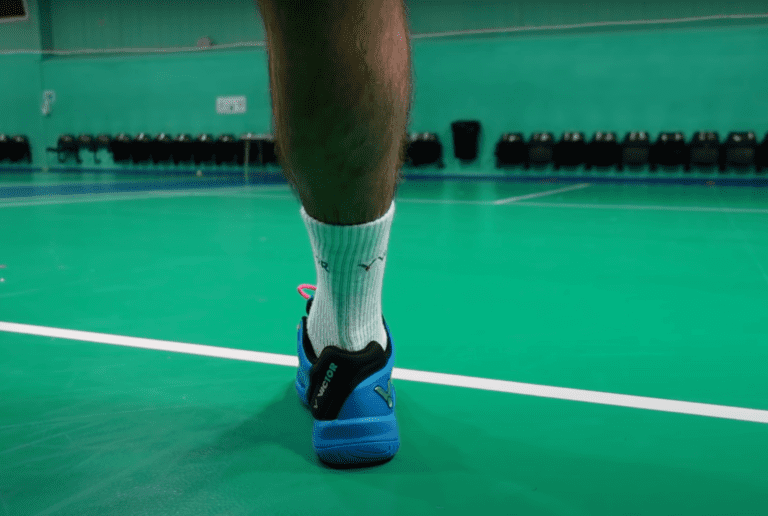
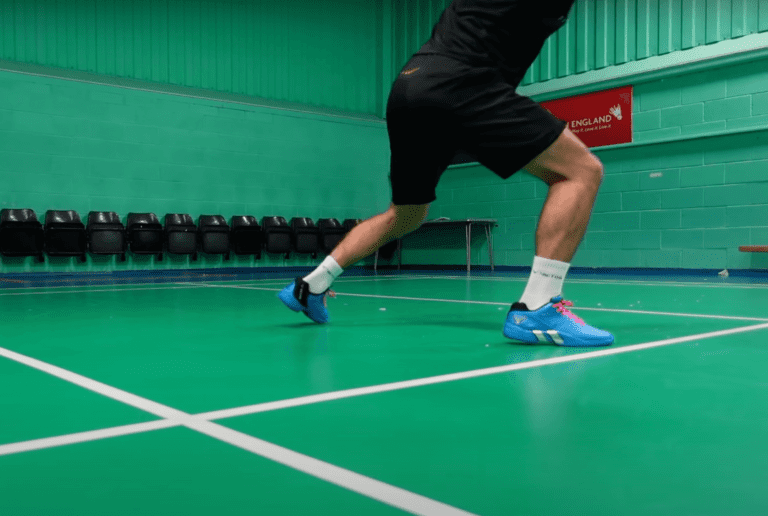
To take the shuttle earlier and increase your chances of playing a better shot, you should stand as close to the service line as possible. Many people will surprise themselves with how close they can stand whilst still being able to get the flick back. Also, if you know your opponent can’t play a flick serve then this would be another reason the move further forward!
We’d suggest experimenting with various different return of serve positions in your next training session!
2. Correct Grip When Returning Serve
We would generally suggest using a bevel grip when returning the serve, no matter which side you are returning from.
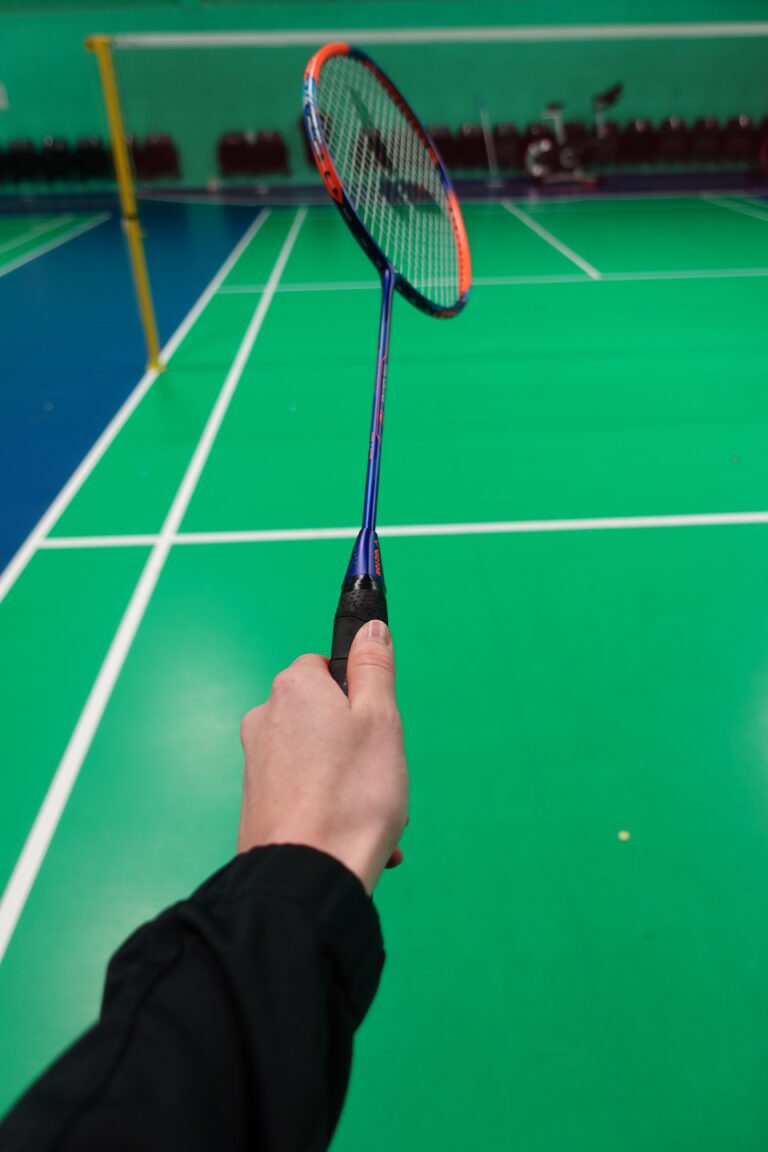

This is because having your thumb on the ridge as shown in the image above will help you adapt your grip easier once you know where the serve is going to.
If you wait in a forehand grip, then you will be later to respond to a serve to your backhand as you have to switch to a backhand grip. Similarly, if you wait in a backhand grip then there is a gap on your forehand side! Your opponents could then notice this and focus on serving to these gaps!
3. Racket Positioning
Your racket should be in a relaxed but ready position and out in front of you so that your elbow isn’t tucked in. This is to help you take the shuttle earlier. You don’t want your arm fully extended as you won’t be able to adjust as quickly to the serve!
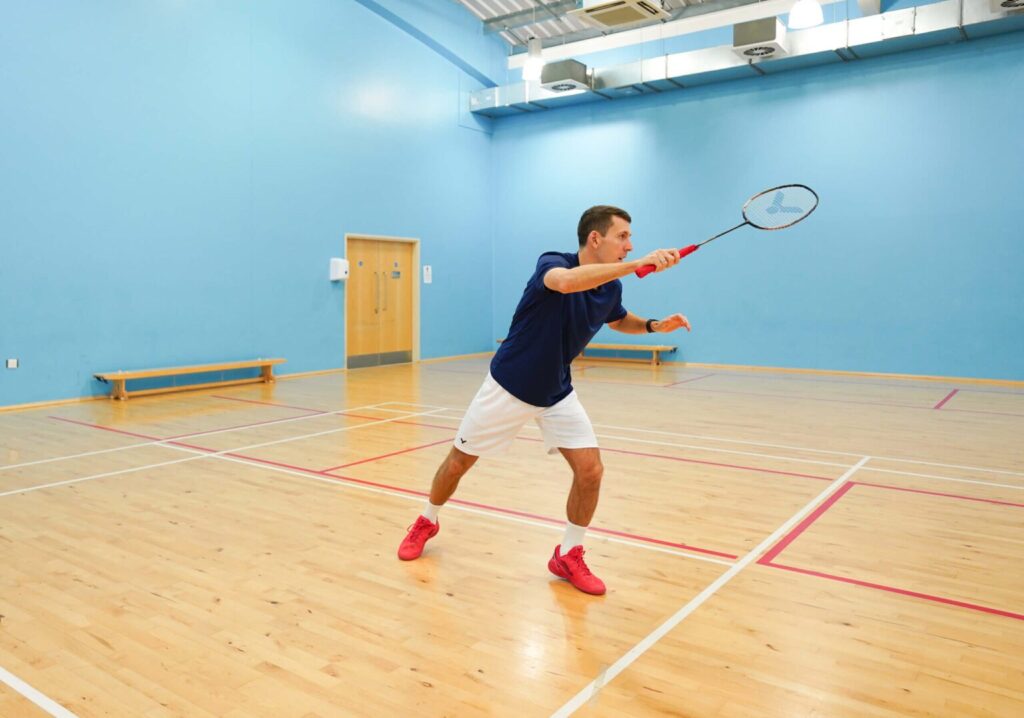
4. Movement When Returning The Serve
There are two choices of movement when returning the serve, and different players will opt for different options!
Option 1 – Push off with your racket leg at the back and then drive it forward.
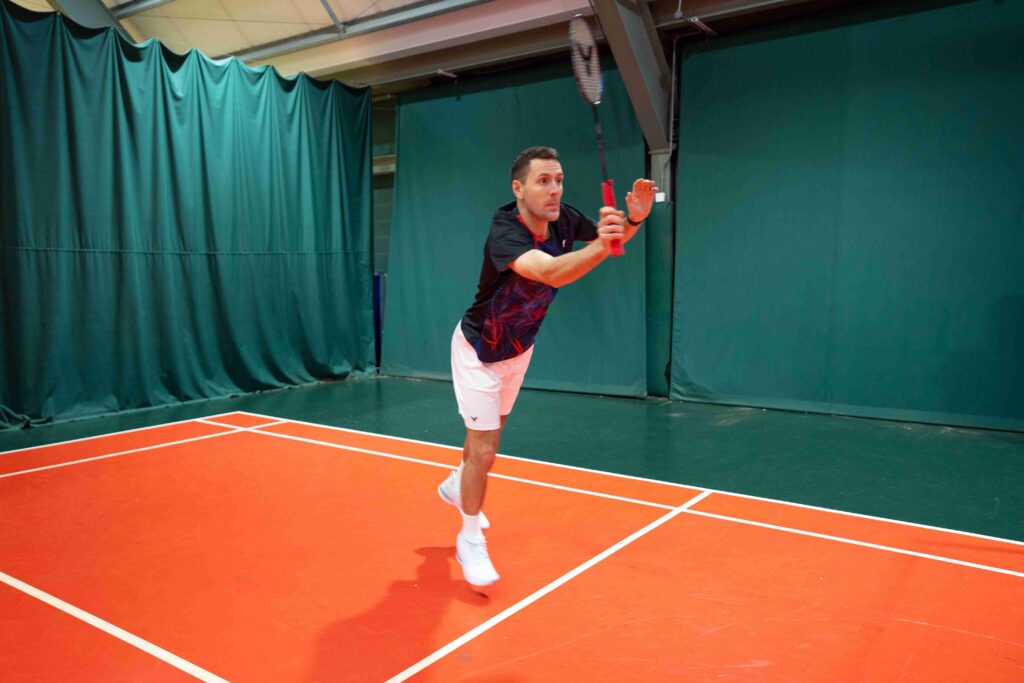
Option 2 – Push off with your racket leg but keep it at the back and lead with your non-racket leg. This one takes a bit of practice to get right but can potentially save you time as you don’t have to bring your racket leg forwards!
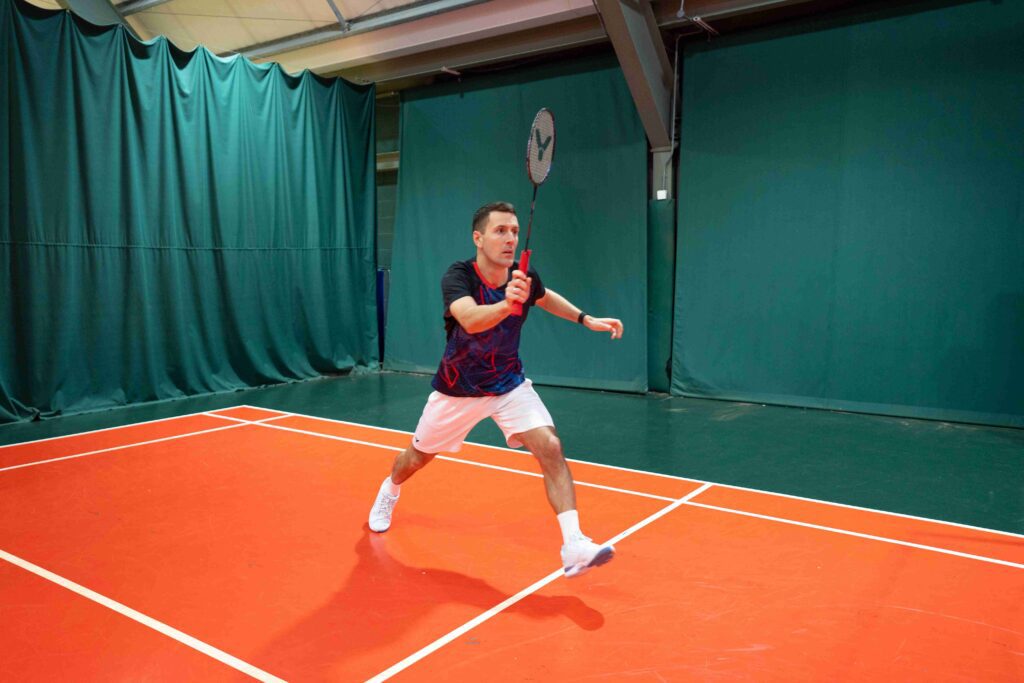
You should use whichever method feels most comfortable for you, but in case you’re unsure which you should use, we have also written a whole article on which leg you should lead with when returning the serve in doubles, which you can check out here!
2 Effective Return Of Serves To Play
1) Net Shot Return
You can play this in response to any short serve and if you play it well, you will nearly always get a lift or weak reply.

Some key points for a good quality net shot return are:
- Hit the shuttle with a flat racket face, so it doesn’t go too high over the net
- Don’t bend your wrist too much and don’t use your arm too much!
- Take the shuttle early to reduce the amount of time your opponent’s have to react
- Don’t outstretch your arm too much making it obvious you are playing a net shot – you also need to move forward with your body!
- Have a small, delicate action using your fingers to create the control
2) Down The Side Return
This return is when you place the shuttle in the space in-between the server and their partner, to create uncertainty over who’s shot it is. It can only be done if your opponent serves to the T or to your body as it’s really hard to do if they serve across you or out wide!
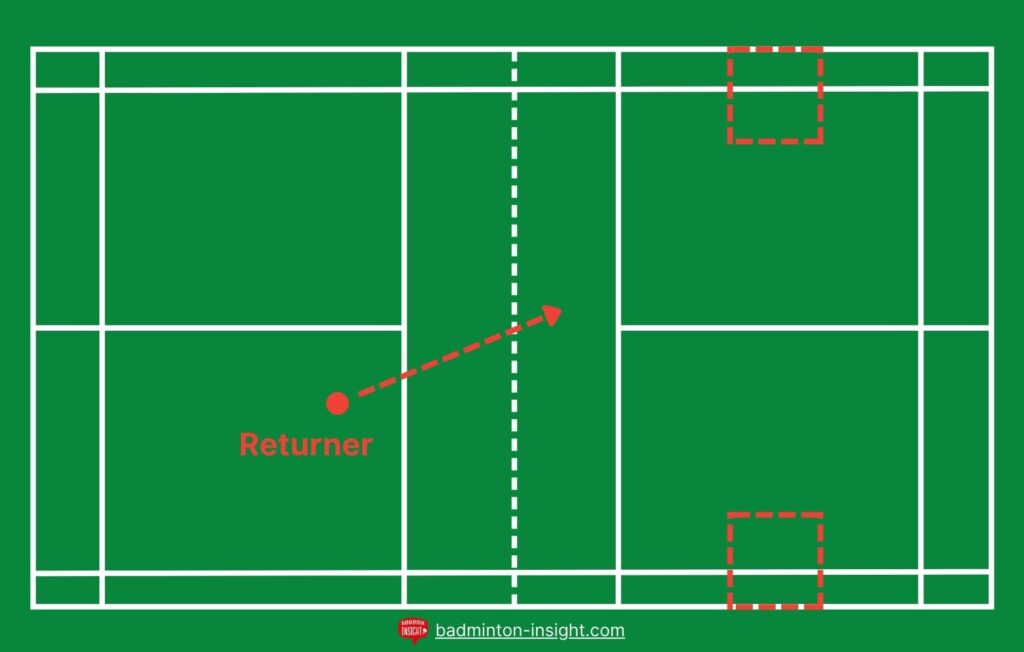
Similar to the net shot return, you need to have a short swing and use your fingers to create the power and control needed. You can also use your arm a little bit more to guide the shuttle to the right place.
We’d recommend bringing your racket leg through for this so you can take the shuttle as early as possible and commit to the shot. This means you’re more likely to get the shuttle travelling in a downwards direction, putting your opponents under more pressure.
💡 TOP TIP: Many people will hit their serve to the same place every time, so if you can recognise this then you can commit more onto the serve you think they will play!
These 2 returns were more basic examples, but if you want to know what else you can play, we teach you 3 more advanced return of serves you can play here! It includes a deceptive return, a return that requires great control, and also a ‘set-play’ from the return of serve made famous by Boe and Mogensen!
Learn More
We hope you’ve now learned the basics of a good return of serve in doubles! If you want to know more about the 5 best doubles return of serve strategies to play, you can check out the article here.
You can also learn how to return the FLICK serve, and what shots you can play from this position here. Or, watch our YouTube video below for visual demonstrations of how to return the low serve and what returns you can play!

